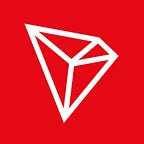Marcus Zhao, technical director of public chain at TRON: Sun Network’s scaling solution lays the foundation for a prosperous ecosystem of TRON
On April 8, TRON officially announced the Sun Network scalability solution, incorporating a series of scaling projects such as side chain for smart contract application and cross-chain communications, which will further expand the overall capacity of the TRON network, as well as improving the TPS and smart contract execution efficiency on TRON. Among the projects, DAppChain is a side chain scaling project designed for TRON’s smart contracts, which will greatly increase the capacity of TRON’s DApps and realize on-chain operation of DApp with low energy consumption, enhanced security and efficiency via customizable methods.
It is reported that the first phase of DAppChain is expected to commence on May 30, 2019.
What is the general idea of the TRON scaling solution? What is the purpose and significance of this solution? Mars Finance interviewed Marcus Zhao, the technical director of public chain at TRON.
Mars Finance: What is the general idea of the Sun Network scaling solution? What is its relationship with DAppChain?
Marcus Zhao: Sun Network is a TRON scaling solution, incorporating a series of scaling projects such as side chain and cross-chain communications; DAppChain is part of the TRON side chain solution. Other details of the side chain solution will be announced later.
Mars Finance: Previously, TRON claimed to have a TPS that is pretty high, so what is the purpose and significance of this scaling?
Marcus Zhao: TRON’s TPS is considered very high compared to Ethereum. However, with the rapid development of the TRON DApp ecosystem, it is necessary to continue to expand the TPS of the smart contract transactions on TRON, so as to prosper the DApp ecosystem and attract more developers.
Mars Finance: What is the overall technical architecture of DAppChain? What are the differences between this technology and other scaling technologies?
Marcus Zhao: The overall technical architecture of DAppChain is the decentralized chain guaranteed by the DPoS mechanism. Compared to other scaling solutions, DAppChain has two notable features: first, supports smart contract transactions and focuses on improving the TPS of the smart contract transactions on the MainNet, as well as lowering the transaction fee; second, the side chain can support more customizable requirements. Major DApp vendor alliances can customize some of the side chain properties based on their own characteristics, such as side chain incentives, transaction rates, block generation speed, and transaction confirmation speed.
Mars Finance: What advantages does DAppChain have over other public chain developments? How are these advantages realized?
Marcus Zhao: The biggest advantage of DAppChain for DApp developers is that the Energy fee is very low; the confirmation time of the side chain transaction can be shortened, thus speeding up the game and supporting more game genres. These advantages are mainly realized by side chain’s support for smart contracts and the customizable features of side chain.
Mars Finance: How does DAppChain achieve synergy between the main chain and the side chain?
Marcus Zhao: DAppChain interacts with the main chain through a smart contract which defines a series of standard interfaces, allowing main chain to mirror assets such as TRX, TRC10 and TRC21 on the side chain and withdraw the assets to the main chain, etc. An essential principal is that all the valid assets on the side chain must come from the main chain, ensuring that the side chain is an extension of the main chain, instead of a hard fork.
Mars Finance: The solution will further expand the overall capacity of the TRON network, increasing TRON’s overall TPS. How do you ensure its safety?
Marcus Zhao: The solution boils down to many stages. At the first stage, DAppChain will adopt the DPoS mechanism of side chain to ensure the consensus and correctness of side chain transactions themselves. In the meantime, we use smart contracts on the main chain and side chain to make sure assets on the side chain are safe and able to be withdrawn correctly.
Mars Finance: How does DAppChain cut down transaction cost significantly? Will the interest of packaging nodes be hampered?
Marcus Zhao: The MainNet can support the launch of many side chain instances simultaneously, and the transaction pressure between different instances will not be transmitted to each other. Consequently, the transaction pressure of the side chain will not affect the MainNet significantly. Therefore, the transaction cost on DAppChain can be brought down greatly. If one side chain is nearly congested, we just need to transfer excess transactions to other side chains.
Mars Finance: At the first stage of DAppChain development, TRON aims to achieve unlimited scalability for the MainNet, which is a dream for many public chains. How exactly does TRON make it happen?
Marcus Zhao: The key to a DAppChain is the single connection of smart contract between the side chain and the MainNet. Smart contracts on the MainNet are responsible for the entrance and exit of assets on the side chain. Whereas the side chain is responsible for the consensus of transaction details.
Mars Finance: As part of the TRON ecosystem, what is the role and mission of DAppChain? How will DAppChain manage its ecosystem? Where is it heading to?
Marcus Zhao: DAppChain is an important guarantee for TRON to take the quality and quantity of its DApps to the next level, laying the foundation for a more prosperous ecosystem of TRON. Each DAppChain can be a micro-ecosystem itself, constituting the entire ecosystem when brought together.
Mars Finance: The tool set and usability need to be improved at the third stage of DAppChain. What exactly does it include?
Marcus Zhao: This includes side chain wallet, explorer, event subscription, more SDKs, game demos, etc.
